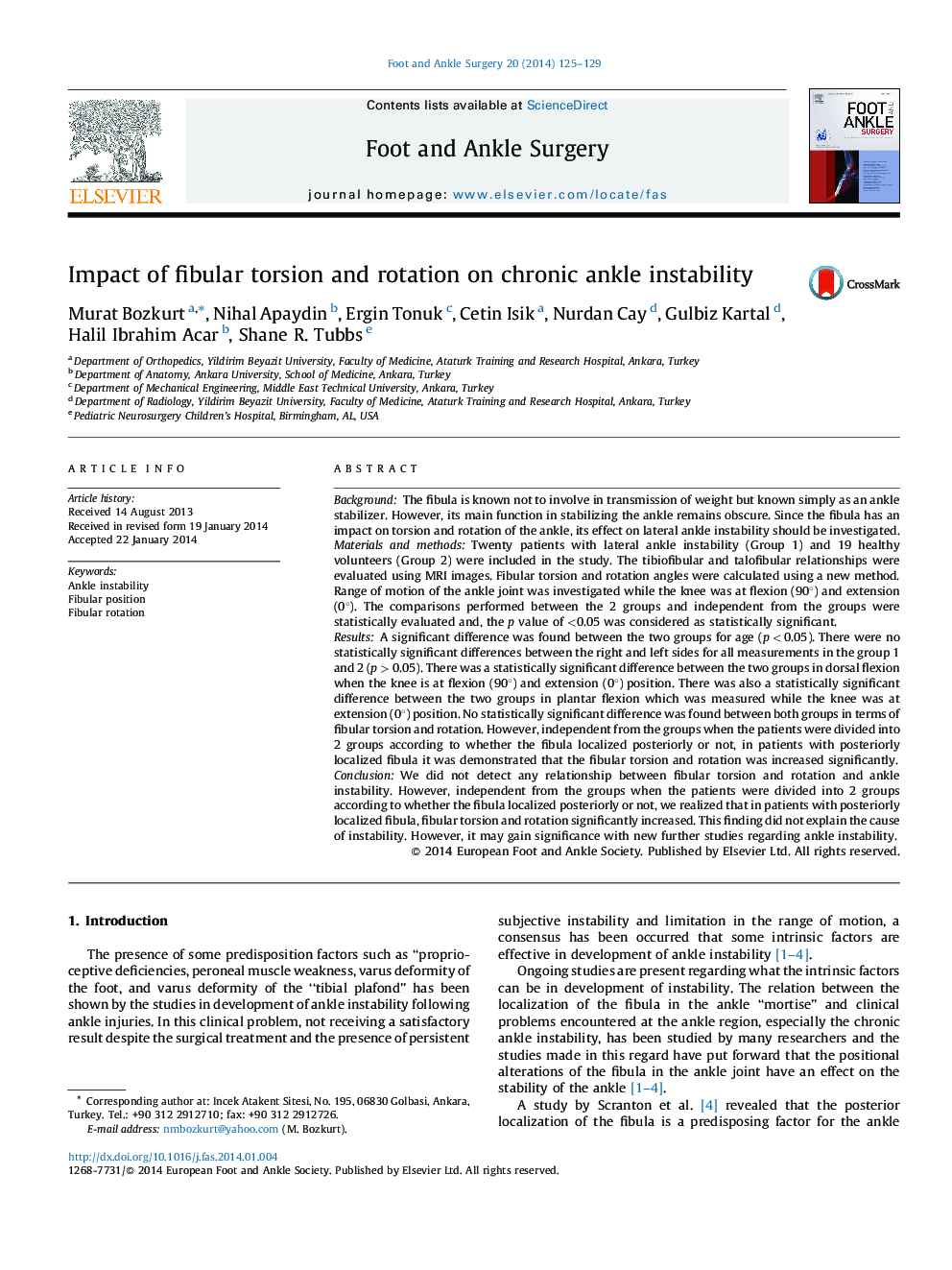| کد مقاله | کد نشریه | سال انتشار | مقاله انگلیسی | نسخه تمام متن |
|---|---|---|---|---|
| 4054717 | 1265534 | 2014 | 5 صفحه PDF | دانلود رایگان |
BackgroundThe fibula is known not to involve in transmission of weight but known simply as an ankle stabilizer. However, its main function in stabilizing the ankle remains obscure. Since the fibula has an impact on torsion and rotation of the ankle, its effect on lateral ankle instability should be investigated.Materials and methodsTwenty patients with lateral ankle instability (Group 1) and 19 healthy volunteers (Group 2) were included in the study. The tibiofibular and talofibular relationships were evaluated using MRI images. Fibular torsion and rotation angles were calculated using a new method. Range of motion of the ankle joint was investigated while the knee was at flexion (90°) and extension (0°). The comparisons performed between the 2 groups and independent from the groups were statistically evaluated and, the p value of <0.05 was considered as statistically significant.ResultsA significant difference was found between the two groups for age (p < 0.05). There were no statistically significant differences between the right and left sides for all measurements in the group 1 and 2 (p > 0.05). There was a statistically significant difference between the two groups in dorsal flexion when the knee is at flexion (90°) and extension (0°) position. There was also a statistically significant difference between the two groups in plantar flexion which was measured while the knee was at extension (0°) position. No statistically significant difference was found between both groups in terms of fibular torsion and rotation. However, independent from the groups when the patients were divided into 2 groups according to whether the fibula localized posteriorly or not, in patients with posteriorly localized fibula it was demonstrated that the fibular torsion and rotation was increased significantly.ConclusionWe did not detect any relationship between fibular torsion and rotation and ankle instability. However, independent from the groups when the patients were divided into 2 groups according to whether the fibula localized posteriorly or not, we realized that in patients with posteriorly localized fibula, fibular torsion and rotation significantly increased. This finding did not explain the cause of instability. However, it may gain significance with new further studies regarding ankle instability.
Journal: Foot and Ankle Surgery - Volume 20, Issue 2, June 2014, Pages 125–129
